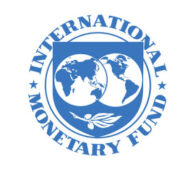
THE International Monetary Fund (IMF) on Tuesday, October 13, downgraded its gross domestic product (GDP) forecast for the Philippines this year following the slowdown in private investment and consumption due to the ongoing coronavirus pandemic.
In its October 2020 World Economic Outlook (WEO) report, the multilateral lender said the country’s GDP is expected to contract by -8.3%, which is a decline from its -3.6% projection in June.
The contraction is deeper compared to Thailand’s -7.1%, Singapore’s -6%, and Indonesia’s -1.5%. China and Vietnam are seen booking GDP growths of 1.9% and 1.6%, respectively. Taiwan’s GDP, meanwhile, is expected to stay flat.
“The downward revision of 2020 growth forecasts for the Philippines from -3.6% in the June WEO to -8.3% in the October WEO mostly reflects a larger-than-expected downturn in Q2 and a more gradual resolution of the pandemic as witnessed over the past months, with prolonged social distancing,” IMF country representative Yongzheng Yang said via email.
The country’s economy experienced a record contraction of 16.5 percent in the second quarter after a national lockdown was imposed to contain the spread of COVID-19.
“Despite a somewhat softer global contraction expected in the October WEO, weak public confidence and low remittances in the Philippines as a result of the pandemic are expected to continue weighing on private investment and consumption,” Yang said.
“The negative impacts of COVID‑19 are expected to be only partially offset by policy support,” he added.
For next year, the IMF expects the country’s economy to rebound and grow by 7.4%, which is better than the 6.8% it projected earlier.
“We have seen some signs of recovery in high frequency data with the gradual reopening of the economy,” Yang said.
“Real GDP is projected to expand by 7.4% in 2021, helped by — in addition to the base effect — an expected rebound in pent-up demand from the relaxation of quarantine measures and continued effects of the policy easing in 2020,” he added.
However, Yang noted that the Philippines will be left significantly scarred by the pandemic.
“Significant scarring effects (e.g., hysteresis, bankruptcies) are expected and it will take a couple of years before real GDP to return to the pre-pandemic (2019) level,” he said.
“Over the medium term, the COVID-19 crisis is expected to result in lower levels of potential output and higher structural unemployment, but real GDP growth is expected to converge back to potential, of 6.5% by 2025,” he added.






